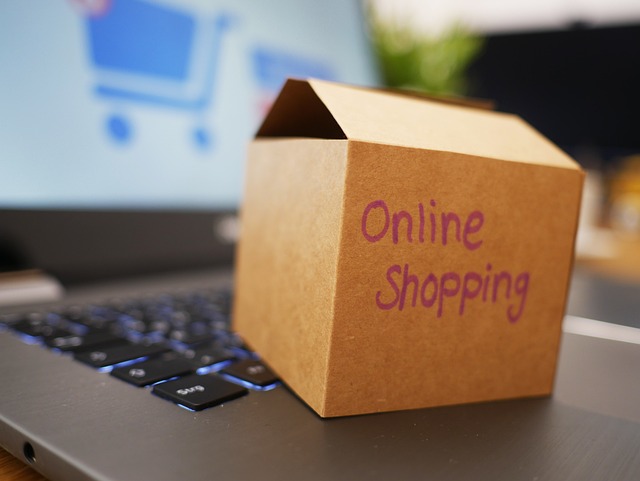In the wake of the unprecedented challenges brought forth by the COVID-19 lockdown, e-commerce emerged as a beacon of hope, offering solace to consumers and businesses alike. As the world retreated indoors, digital technologies soared to new heights, transforming the way we interact, transact, and traverse the digital landscape. From the comfort of our homes, we witnessed the meteoric rise of e-commerce, a phenomenon fuelled by innovation, resilience, and an unwavering commitment to connectivity.
Today, the allure of e-commerce knows no bounds, captivating audiences with its convenience, accessibility, and boundless array of offerings. It’s more than just a trend; it’s a revolution – an evolution of commerce that transcends geographical barriers and redefines the very essence of retail. So, step into the digital marketplace, where every click is a journey, and every transaction is a testament to the power of technology and human ingenuity. Welcome to e-commerce.
- Key features and functions of a payment gateway
- Process for having a recognised e-commerce operation
There are several types of e-commerce models and these include:
- Business to Consumer (B2C): This is the most common form of e-commerce, where businesses sell products and services directly to consumers. Examples include online retailers like Amazon and various brands.
- Business to Business (B2B): This model is quite straightforward as it implies the selling and exchange of goods and services such as Alibaba.
- Consumer to Consumer (C2C): In this model, transactions are made between individual and consumers. Online marketplaces such as eBay and Etsy are examples of C2C e-commerce, where individuals buy and sell goods directly to each other.
- Consumer to Business (C2B): In C2B e-commerce, consumers offer products or services, and businesses bid for the opportunity to purchase or hire them. This model is often associated with freelancing platform or influencer marketing.
- Business to Government (B2G): This involves businesses providing goods and services to government entities.
The convenience and accessibility of e-commerce have changed the way we shop and do business. E-commerce provides an international marketplace that operates around the clock, with transactions typically taking place through online platforms or websites and involving a variety of payment methods such as credit cards, digital wallets, or other electronic systems.
For that reason, payment gateways are an integral part of many e-commerce transactions and the absence of a payment gateway would therefore limit the way transactions are processed and the payment methods that can be accepted.
An e-commerce using an online payment gateway is categorised as a FinTech (Financial Technology) product. FinTech implies the leveraging of technology to provide financial services and solutions, and an e-commerce with online payment processing falls within this category.

The key features and functions of a payment gateway:
- Transaction Processing: The payment gateway facilitates the processing of online transactions by securely transmitting payment information between the customer, the merchant and the payment processor.
- Encryption and security: Payment gateways use protocols to secure the transmission of sensitive data, such as credit card numbers, and personal information. This helps protect customer data from unauthorised access and ensure the confidentiality of financial details.
- Authorisation: A payment gateway communicates with the customers issuing banks to obtain authorisation for the transactions. It verifies that the customers have sufficient funds or are within their credit limit to complete the purchase.
- Integration with Merchant Websites: Payment gateways are integrated into e-commerce websites or applications, allowing customers to make online purchases seamlessly. Integration involves incorporating the necessary code to enable secure communication between the website, the payment gateway, and the payment processor (banking and non-banking financial institutions).
- Payment Methods: Payment gateways support various payment methods, including credit cards, debit cards, digital wallets, payment link, and alternative payment options. This flexibility allows businesses to cater to a wide range of customer preferences.
- Real-Time Processing: Payment gateways enable real-time processing of transactions, providing immediate feedback to customers and merchants about the success or failure of a payment. This helps streamline the checkout process and improves the overall user experience.
- Tokenisation: Some payment gateways use tokenisation to enhance security. Tokenisation replaces sensitive information with a unique identifier (token), reducing the risk associated with storing and transmitting actual credit card numbers.
- Compliance: Payment gateways are required to comply with the Payment Card Industry Data Security Standard (PCI DSS), which sets security standards for handling credit card information. Compliance ensures that the payment gateway adheres to industry best practices in safeguarding payment data.
- Settlement and Payouts: After authorisation, the payment gateway facilitates the settlement of funds from the customer’s account to the merchant’s account. This involves the transfer of funds between banks and financial institutions.
Businesses choose payment gateways based on factors such as fees, features, supported payment methods and ease of integration with their e-commerce platforms. Popular payment gateways include Stripe, Paypal, Square and Peach.
Ultimately, an e-commerce website without a payment gateway would essentially be a website with a collection of web pages providing information, promoting a business or brand, offering educational content or sharing personal interests.
You may have noticed the use of both the terms e-commerce platforms and e-commerce websites in different instances. Despite their related nature, they actually serve different purposes in the online retail environment, whereby the e-commerce platform is the infrastructure encompassing a set of tools, attributes, and functionalities that power the e-commerce operation. On the other hand, an e-commerce website is an online store created and managed using an e-commerce platform. The platform is the broader system, whereas the website is the specific online presence of a particular business within that system.
What is the process for having a recognised e-commerce operation?
Running an online retail venture involves fulfilling various legal requirements and conditions. Without a properly registered legal entity, it is unlikely that you will be able to incorporate a payment system into your online store. Therefore, it is crucial to carefully assess factors like legal, financial, and operational considerations when selecting the right jurisdiction for registering your entity to facilitate seamless e-commerce operations. A proficient offshore advisor such as Offshore Solutions, should examine the following key factors:
- Tax Consideration
- evaluate the tax implications in potential jurisdictions such as tax rates and tax incentives.
- consider corporate income tax, sales tax or value-added tax (VAT), and other local taxes.
- Legal Structure and Jurisdiction:
- the legal structure of your business (e.g., sole proprietorship, limited liability company, or other types of corporation) and how it aligns with the regulations of the jurisdictions and the requirement of the payment service provider.
- Business Climate
- consider factors such as economic stability, ease of doing business, and government support for concerned business activity.
- Logistics and infrastructure
- analyse the location of your target audience and the ease of reaching them in case your e-commerce operation requires the delivery of goods and whether the implementation of a warehouse is necessary to facilitate the delivery.
- Regulatory Environment:
- review the regulatory environment, including the e-commerce rules and regulations, consumer protection laws, and data protection regulations.
- ensure that the legal framework aligns with your business model and operations.
- Intellectual Property Protection:
- ensure strong protection of your brand, trademarks, and other intellectual property.
- Banking and non-banking financial infrastructure:
- evaluate the ease of managing financial transactions and the availability of banking and non-banking financial services.
- Cost
- conduct an evaluation of the cost associated with the registration of your offshore entity. This includes cost related to regulatory compliance, reporting and other legal obligations.
Keep in mind that the ideal jurisdiction to establish your legal entity may vary depending on the specific nature and objectives of your e-commerce business. It is recommended to seek advice from professionals, with expertise in international business who can provide customised guidance for your situation.
To conclude, a payment gateway is a fundamental component of an e-commerce website that ensures secure, efficient, and convenient online transactions, thereby bolstering customers trust. And, establishing an e-commerce business in the appropriate offshore jurisdiction within a sound regulatory environment would enhance the effectiveness of an e-commerce operation.
Author: Lorna Chuttoo

Comments are closed